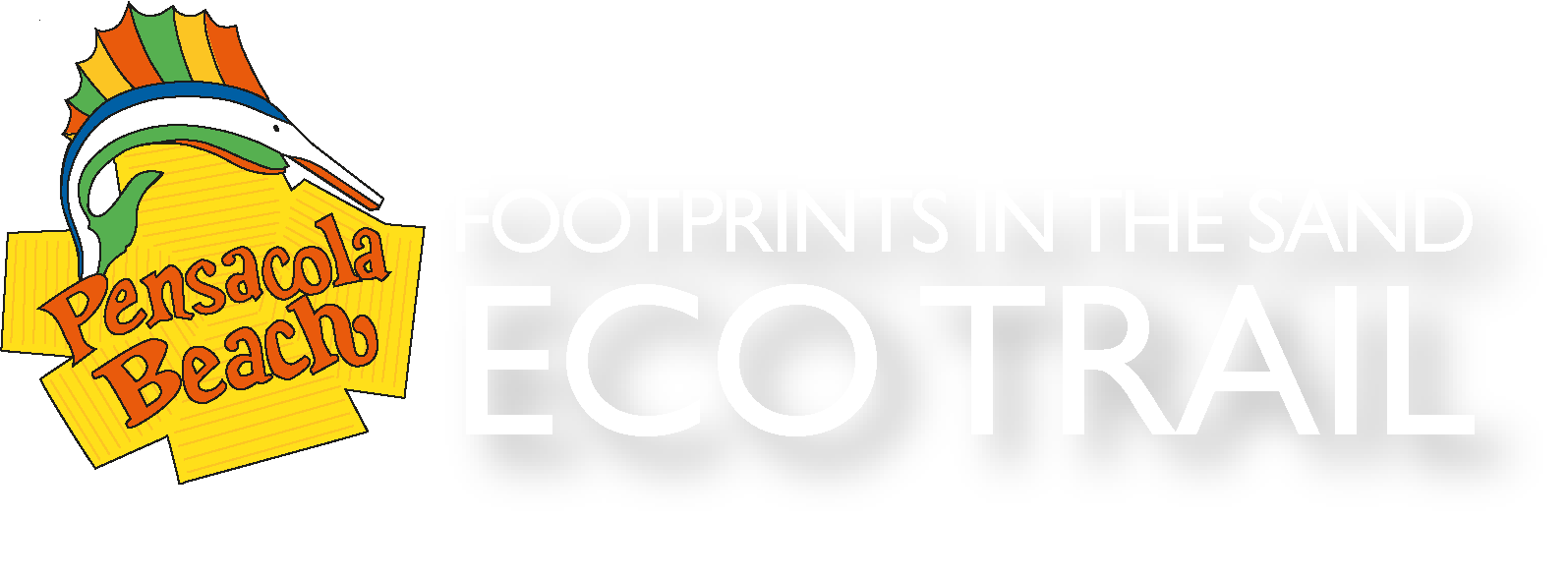Great Blue Heron in Sea Oats © Harry Purcell
GRASSES
Walking along Pensacola Beach, the most noticeable plants growing on the dunes are the tall, stately Sea Oats. These grasses serve as anchors for the whole dune system—their roots can grow up to 40 feet deep. Acclimated to the harsh environment of full sun, constant salt spray, and dry soils, sea oats also serve as a food source to beach mice, rabbits, and a variety of birds. When a young sea oat sprouts and starts to grow upright, blowing sand from the beach hits the stems and falls to the ground. Over time, this creates a small pile of sand at the base of the plant. This windblown sand stimulates the sea oat to grow above the pile of sand, more accumulates, and soon there is a baby sand dune.
.
Sea Oats
The cumulative impacts of those sand piles create the dunes in place today. Hurricanes have torn down many historically large sand dunes, but large ones (20+ feet tall) are still present in places along eastern Santa Rosa Island. While the sea oats and other dune grasses do a great job, these dunes are still built on shifting sand. Repeated impacts from people walking over the dunes, whether on established foot trails or at random—can destroy this delicate system and leave the island vulnerable to larger impacts from storms.
Bitter Panic Grass is a relatively nondescript grass that grows on the primary dunes, above the highest tide lines. Like other dune plants, it has underground stems that function to trap and hold sand in the dunes, allowing for stabilization. Its larger seedheads, called panicles, provide food for native wildlife, and the grass serves as a protective cover for animals avoiding predators. Like other Panicum species, the stem grows upright, with blades of grass jutting out at 45° angles in an alternating pattern.
.
Big Sabine Dune
Looking across a dune field, a shorter grass with gray/bluish/purple blades stands out. This is Gulf Bluestem and it plays an important role in the dune system. It’s mostly found on the sheltered back slope of dunes, where it is often a more dominant species than sea oats. The grass grows low, no more than 1 ½ feet tall, and like other dune plants provides wildlife habitat.
Salt Marsh Hay and Sand Cordgrass are common clumping grasses found in both primary and back dunes. Sand cordgrass is more of a bunchgrass like muhly grass, while salt marsh hay/cordgrass, as its name suggests, lives closer to wetter and highly saline environments. It grows in a less clumping form and more as individual plants growing up from runners.
.
Big Sabine Point
Muhly Grass is one of the most beautiful fall-blooming plants native to local dunes. A clumping grass that stays green most of the year, it explodes into pink/purple color in late September through the month of October. It is found on the backside of dunes, and its drought, flood, and salt tolerance also make it a hardy landscape plant for the coastal South.
.
Muhly Grass in Bloom
Plants | Plant Zones | Grasses | Seagrasses | Flowers & Vines | Shrubs | Seaweed






